#CGN
Explore tagged Tumblr posts
Text
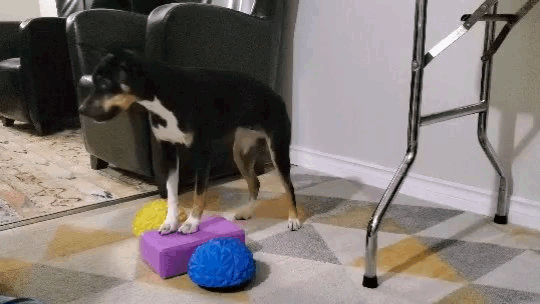

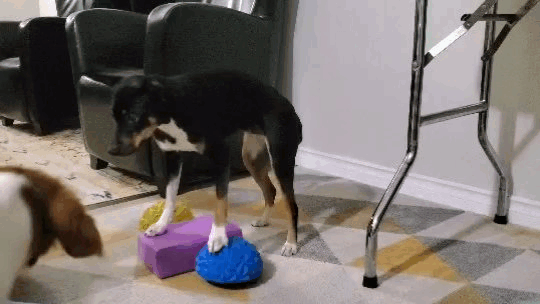
Little fish behaviours while also periodically chucking kibble behind me for the world's wiggliest puppy.
#everyone wants to be involved#I have to find smaller training goals bc the current trial/test goals feel too big en#*rn#rally excellent#cgn#open scent detection#she's got basically everything but I haven't trialed or taken classes in a while#the anxiety around working with my dog in public is eating me#turnpike#rory borealis#gif set
42 notes
·
View notes
Text
野鳥調査を通じたタジャン農家とインドネシア農家の交流プログラム 2日目
カッピング
2日目は、El Union Coffee BaguioでCGNのコーヒー豆を販売するKapi Tako Social Enterpriseの新豆のカッピングをすることから始まりました。インドネシア��Klasik Beansのみんなにも参加してもらい、CGNスタッフのリリーと、El Union Coffee Baguioのスタッフと一緒に行いました!
カッピングとは、コーヒー豆を全て同じ条件のもとで香りや味を評価する方法です。これを元に、ベストな焙煎・抽出に繋げていきます。淹れ方などで味に差が出てしまわないように、挽き方・粉量・時間・湯量等まですべて統一されています。
私にとって初めての体験。説明を聞きながら見よう見まねで挑戦してみました^^
今回は9種類のコーヒー豆をカッピングしました。

*サンプル豆にむらがあって誤差が出ないように、一つの種類の豆に対して2つまたは3つのサンプルを用意します(今回は2つでした)。
Step 1 コーヒー豆の匂いを嗅ぐ
まずは、お湯を注ぐ前に挽きたてのコーヒーを一つずつ匂いを嗅いでいき、どんな香りがするかメモします。
Step 2 ブレイク
次にお湯を注いで香りを嗅ぎます。お湯を入れてから4分後にスプーンを使って浮いてきたコーヒーの粉をかき混ぜて、香りが一気に出てきたときに匂いを嗅ぐ「ブレイク」と呼ばれる行為もしながら行っていきます。

*コップに触らないように嗅いでいくのがポイント。
Step 3 テイスティング
次にかき混ぜた後の上澄みをスプーンで取り除き、いよいよ味を比較していきます。カッピング専用の丸く深めのカッピングスプーンでコーヒーの液をすくい、口に含ませてどんな味がするか一つずつメモに書いていきます。舌全体で味を感じるために音が立つほど啜ることがポイントだそうです。私は最初の7種類は味の違いが全くわからず、ほぼ諦めかけていましたが、なんとか最後の方の2種類の味の違いをはっきり感じることができて安心しました。その2つが一番味の差がはっきりしているらしく、最低限のラインを理解できたという感じです笑。
私が四苦八苦している中、カッピングのプロ達は一つ一つどんな味がするのか確かめていきます。香味基準である酸味や甘さ、香り、後味、風味、あとは重厚感や密度を表すボディの観点から評価するだけでなく、これはオレンジの味がするなどといった自分が持っている食べ物の記憶とも照らし合わせていきます。

全てカッピングし終わったら、共有の時間です。人によって味の感じ方は異なるため、それぞれどんな味がしたのかを聞いていきます。まりこさんが、「カッピングはその人の食のバックグラウンドが大きく影響する。」とおっしゃっていたように、表現の仕方がフィリピン人とインドネシアの人では違っていて、聞いていてとても面白かったです。例えば言語が違うため、フィリピン人が「チコ」のような味がすると言っても伝わらず、英語では「サポジラ」と言われていると説明したり、写真を見せたりすることで「インドネシア語ではこう言われているやつだ!」とディスカッションしながらそれぞれが感じた味を理解していきました。

*チコ(サポジラ)は、日本にはない���帯のフルーツですが、とても甘く、個人的に良く熟れた柿に味が似ていると思います。

*カッピングのプロ達は話に熱中し、とても盛り上がっていました笑
こうして、盛り上がりを見せたカッピングセッションでしたが、El Union Coffee Baguioにとってもインドネシアのコーヒーのプロが訪れたことは非常に良い刺激になったようです。

*インドネシアのみんなには馴染みがある味だったようで好評でした!
タジャンへ移動
3時前に出発し、ステイ先であるLayog Country Farmについたのは夜8時。先入りして調査を行なっていたバードリサーチチーム(神山さん、石田さん、上田さん、ジャン)とCGNスタッフ(マイラ)、メディア班(ライネル、グラディス)達とも合流し、夜ご飯を食べました。
そのあとは、自己紹介も含めてミーティング。Klasik Beansのセンディが淹れてくれたインドネシアのコーヒーを飲みながら、各団体の紹介や明日の予定などを確認して充実した1日が終わりました。

感想
普通は正解を求めてしまいがちですが、正解や間違いはないカッピングの世界。カッピングは多くの場合、バイヤーがどのコーヒーを購入するかを決める時に行われるそうで、バイヤーの好みやどんな抽出方法でお客様に提供するかなどで、評価が変わってきます。この豆は酸味があまりないから買わないというわけでもなく、じゃあエスプレッソベースにしようなどという販売方法もカッピングで決めます。コーヒーってこんなに奥深いんだなーと実感。また、表現方法も本当に多種多様で、一概にフルーツといっても、オレンジのように酸味が強いのか、りんごのように甘酸っぱさが強いのかなど味の方向性もどんなフルーツに例えるかによって大きく変わってきます。よくないコーヒーに当たった時には「土っぽい、灰っぽい、かびっぽい」などの言葉を使うこともあり、ワードチョイスが私には新鮮で、「そういう表現もできるんだ〜」と学びました。味覚センスと表現力、語彙力が非常に問われることを実感したカッピングでした。もしまたカッピングを行う機会があったらその時までに少しは成長できているといいなと思います^^
3日目に続く→→→
Exchange program between farmers in Tadian and Indonesia through bird surveys - Day 2
Cupping Session
On the second day, we started with a cupping session at El Union Coffee Baguio, featuring new beans from Kapi Tako Social Enterprise, which sells CGN’s coffee beans. Members of Klasik Beans from Indonesia joined us, along with Lily from CGN and the staff from El Union Coffee Baguio.
Cupping is a method used to evaluate the aroma and taste of coffee under standardized conditions. This process helps determine the best roasting and brewing methods. To ensure fair comparisons, all variables—such as grind size, coffee-to-water ratio, steeping time, and water temperature—are kept consistent.
It was a first time experience for me. I carefully listened to the explanations and did my best to follow along.
We cupped nine different types of coffee beans.
Step 1: Smelling the coffee
Before adding hot water, we smelled the freshly ground coffee and took notes on its aroma.
Step 2: Breaking the crust
Next, we poured hot water over the coffee grounds and smelled the aroma again. After four minutes, we performed the “break,” using a spoon to stir the floating coffee grounds. This releases a concentrated burst of aroma, allowing us to evaluate it more clearly.
Step 3: Tasting the coffee
After stirring, we removed the foam from the surface and finally began tasting. Using a special, round, deep cupping spoon, we slurped the coffee to spread it evenly across the tongue and noted our impressions.
At first, I couldn’t distinguish the flavors of the first seven samples and was almost ready to give up. However, when I reached the last two, I finally noticed a clear difference between them. Apparently, these two had the most distinct flavors, making it easier for a beginner like me to recognize the contrast.
While I was struggling, the cupping professionals carefully analyzed each sample. They not only evaluated key characteristics such as acidity, sweetness, aftertaste, aroma, flavor, and body (which represents the coffee’s texture and weight) but also described flavors in reference to foods they had tasted before. For example, someone might say, “This has an orange-like flavor,” based on their past experiences.
For example, when a Filipino participant said, “This coffee tastes like Chico,” the Indonesian participants didn’t recognize the reference. To bridge the gap, they looked up the English name—sapodilla—and showed pictures, which helped everyone connect the flavors to something familiar in their own language.
The cupping session turned out to be a lively and exciting experience. It also seemed to be a great source of inspiration for the team at El Union Coffee Baguio, as they got to interact with experienced coffee professionals from Indonesia.
Before starting our long drive to Tadian, we had an authentic Indian meal at Ranee House of Curry for lunch. The food took about 40 minutes to serve, but unlike in Japan, no one seemed impatient or constantly checked the time. Instead, everyone enjoyed the conversation without any concern for the wait. This relaxed atmosphere is similar to the Philippines, and I found it really comforting.
Journey to Tadian
We left Baguio just before 3 pm and arrived at our accommodation, Layog Country Farm, around 8 PM. There, we met up with the bird research team—Koyama, Ishida, Ueda, and John—along with CGN staff member Mhyra and media team members Rainel and Gladies, who had arrived earlier to begin their research.
After dinner, we held a meeting where we introduced ourselves and went over the schedule for the next day, all while enjoying Indonesian coffee brewed by Sendy from Klasik Beans.
Reflections
I realized that in cupping, there are no absolute right or wrong answers. Cupping is often used by buyers to decide which coffee beans to purchase, and the evaluation varies based on their preferences and brewing methods. For example, a coffee with low acidity isn’t necessarily bad—it might be ideal for espresso-based drinks. This experience made me realize just how deep and complex the world of coffee is.
I also found it fascinating how different words are used to describe flavors. Depending on the fruit chosen for comparison, the flavor notes can vary greatly—a coffee with bright acidity might be likened to an orange, while a sweeter coffee might be compared to an apple. On the other hand, when evaluating poor-quality coffee, people might use words like “earthy,” “ashy,” or “moldy.” These expressions were new and interesting to me.
Through this session, I learned that cupping requires not only a refined sense of taste but also strong descriptive skills and a broad vocabulary. If I get the chance to do cupping again, I hope I’ll have improved by then! Hahaha.
To be continued on day 3→→→
2 notes
·
View notes
Text
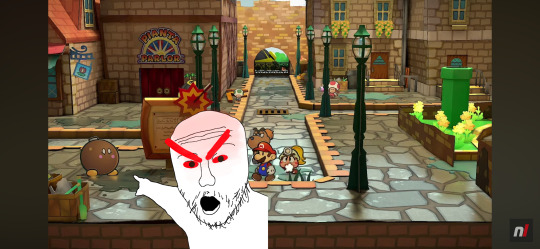
FUCK THIS PIECE OF SHIT BOMB AND HIS CRAPPY SUCKY LOTTERY
#paper mario ttyd#ttyd#ttyd remake#happy lucky lottery#ninteno#nintendo gamecube#cgn#nintendo switch
3 notes
·
View notes
Text
Spring in Cologne 💗
2 notes
·
View notes
Text
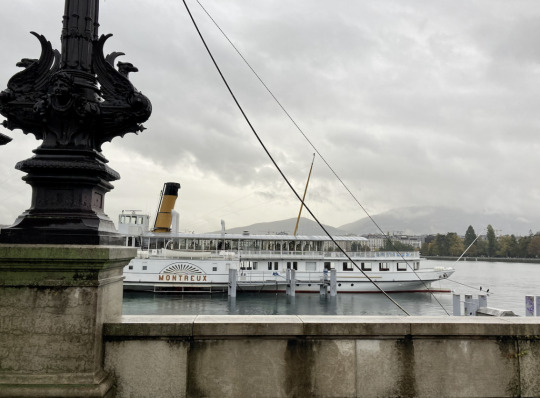
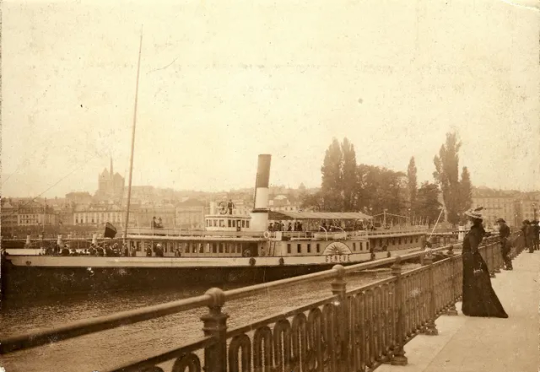
“Le Montreux” un des bateaux à vapeur “Belle Epoque” avec roues à aube sur le Lac Léman à Genève , novembre 2023.
1 note
·
View note
Link
Carta Giovani Nazionale (CGN) 2023 La Carta che consente di avere sconti e agevolazioni su beni e servizi di tipo culturale, formativo, sportivo e di intrattenimento per ragazzi e ragazze dai 18 ai 35 anni.
#cartagiovaninazionale#cgn#appio#spid#cie#quickpa#caf#patronato#sostegnogiovani#bonussconti#bonusagevolazioni#strumentodigitale
0 notes
Text

6/15/1989 A starboard quarrter view of the nuclear-powered guided missile cruiser USS LONG BEACH (CGN-9) underway near the coast of Southern California. USN iImage/
60 notes
·
View notes
Text
野鳥調査を通じたタジャン農家とインドネシア農家の交流プログラム 1日目
みなさんこんにちは。CGNインターンのKurumiです。
今回は2/9〜2/15にかけて、インドネシアから5人の農家の方々が、CGNの事業地であるタジャンを訪れ、交流プログラムを行ったのでそのことについて、感想を書いていきたいと思います。
まずこのプログラムは、「野鳥がつなぐアジアの持続可能なコーヒー ~野鳥を指標とした環境評価手法による東南アジア2国の持続可能なコーヒー推進事業~」(トヨタ財団環境助成)というプロジェクトタイトルの元、フィリピンとインドネシアのアグロフォレストリーでコーヒー栽培を行なっている地域で野鳥を調査することで、野鳥を指標とした環境評価の導入、アグロフォレストリーにおける環境保全の指針作成、環境に配慮したサステイナブルコーヒーに関心のある消費者への販売につなげることを目的としたプロジェクトです。
日本からは野鳥調査のプロであるNPO法人バードリサーチJapan Bird Associationのメンバー3名、インドネシアからはKlasik Beans Cooperativeから5名が訪れました。
Klasik Beans Cooperativeは、インドネシア、ジャワ島を拠点とするコーヒー農家の組合です。2008年に創設され、コーヒーの栽培指導や小規模加工施設の設置と運営から今ではマーケティングまで行い、環境保護を考慮して作られた質の良いコーヒーを国内外へ販売しています。これまでにも2度創設者のエコさんに実際にCGNに指導しに来てもらったこともありますが、今回は新しく5人の若い農家の方が来てくれました。
こ��では、まずインドネシアからの一行が到着した1日目の様子をレ��ートします。

*スケッチブックに書いた手作り感満載のウェルカムボード。

*マニラ空港でコーヒーを飲みながら自己紹介。左からアンドリ、まりこさん、ウデン、マリアム、ゼナ、私、センディ。
無事にインドネシアチームとも合流でき、その後5時間かけてバギオへと向かいます。初めてのフィリピンで、新鮮な反応をしているインドネシアチームのみんなを見て、自分が初めてフィリピンに来た時のことを思い出して懐かしくなりました。
ケノンロードのジグザグ道を上り、バギオの入口にあるLion’s Headで少し観光したのち、昼食を食べ(Ebais Cafe)、宿泊先にチェックイン(Eco Lodge)し、CGNのオフィスへ向かいました。オフィスではCGNのコーヒーを出しているNest Coffee Roastersのコーヒーを飲みながら、まりこさんによるCGNの団体説明。

*Lion's Head。私も初めて見ましたが、すごくダイナミックで多くのフィリピン人観光客で賑わっていました!

*オフィスでまりこさんがCGNについての説明をしている場面。インドネシアとの共通点なども見つかり有意義な時間!
また、ちょうどフィリピンの主にパンガシナン州で活動している埼玉県ふじみ野市の市民団体Kumusta ka LINK(クムスタカ・リンク)の方々がCGNのコーヒー事業地を1日ツアーで訪れていて、バギオを出発前にオフィスに寄ってくれた際に、ご挨拶することもできました。クムスタカ・リンクの方たちは、CGNのリリーさんの案内でトゥブライ町の生産者を訪ねたとのことで、コーヒーの収穫から加工・焙煎・試飲までの一通りの工程を初めて体験し、非常に楽しんだ様子が伝わってきました!
この時点ですっかり日も暮れていて、CGN事務所を出て急いで夕食へ(Oh My Gulay)。ベジタリアンフードを楽しんだあと、私はインドネシアチームのみんなとお別れし、帰宅しました。みんなはさらにモールへ行き夜景を見てからロッジに戻ったそうで、インドネシアチームの体力に驚きました笑。
次の日はいよいよタジャンへ移動する日です!が、移動する前にバギオでカッピング体験もしたのでお楽しみに〜

*ジープ(フィリピンの代表的な乗り合いタクシー)内での様子。みんなジープに興味津々で、デザインがとにかく気に入ったみたいで写真を撮りま��っていました笑。
Exchange program between farmers in Tadian and Indonesia through bird surveys - Day 1
Hello everyone, I’m Kurumi.
From February 9th to 15th, an exchange program took place where five coffee farmers from Indonesia visited Tadian, one of CGN’s project sites.
This program is a part of the project titled “Sustainable Coffee in Asia Connected by Migratory Birds - A Project to Promote Sustainable Coffee in Two Southeast Asian Countries by Environmental Assessment Methods Using Birds as Indicators.(Toyota Foundation Environmental Grant)” This project aims to introduce an environmental assessment method using birds as an indicator, draft guidelines for forest conservation in agroforestry and to promote sustainably cultivated coffee to environmentally conscious consumers.
From Japan, three bird researchers from Japan Bird Research Association joined the survey while five coffee growers from Klasik Beans Cooperative came from Indonesia.
Klasik Beans Cooperative is an organization of coffee farmers based in Java, Indonesia, established in 2008. They provide guidance on coffee cultivation, establish and operate small-scale processing facilities, and now even engage in marketing. Their high- quality, truly environmentally friendly coffee is exported nationwide and worldwide. Before, Eco, the founder of Klasil Beans, visited CGN to share their expertise, but this time, five young farmers participated in the exchange.
Now, let’s dive into the details of Day 1.
The Indonesian team arrived at Manila international airport on February 9th early in the morning, so I picked them up from Baguio by van. I met Mariko san there and held a welcome board for the first time.
After meeting up, we took a five- hour van ride to Baguio. It was their first time in the Philippines, and seeing their reactions reminded me of when I first came here
Upon arriving in Baguio, we did sightseeing at the Lion’s Head, had lunch(Ebais Cafe), and checked into their lodge(Eco Lodge). After a short break, we headed to our office and Nest Roasters Coffee served coffees to them that used CGN’s coffee. While enjoying the coffee, Mariko san introduced CGN’s activities. The discussion was insightful, as we found many similarities between Indonesia and the Philippines and shared our experiences.
Coincidentally, a Japanese organization called Kumusta ka LINK, which supports Filipino communities, was also visiting CGN’s coffee project site that day. Before leaving Baguio, they stopped by our office, and we had the chance to greet each other. It was shared that, guided by Lily from CGN, they visited coffee producers in Tublay. They seemed very excited, as it was their first time experiencing the entire coffee process—from harvesting to processing, roasting, and tasting.
By the time we finished, it was already dark outside. We quickly headed out for dinner and enjoyed some vegetarian food there(Oh My Gulay). After saying goodbye to them, I returned home, but they still had enough energy to visit a mall and admire the night view. Their stamina really surprised me!
That’s all for Day 1! The next day, we’ll be heading to Tadian, but before that, we also had a cupping session in Baguio. See you in the next blog!
2 notes
·
View notes
Photo
Weird

@thegoodwillout · · · Kangaroos x Worldbox Coil R1 ‘City Lights’ estará disponible pronto en The Good Will Out | www.tgwo.com #kangaroos #classic #hypebeast #highsnobiety #thedropdate #basementapproved #sneakersmag #praisemag #sneakerfreaker #complexkicks #sneaker #sneakers #nicekicks #kicksonfire #sneakernews #cologne #cgn #thegoodwillout #tgwo (at Grand San Francisco)
#thegoodwillout#highsnobiety#nicekicks#thedropdate#hypebeast#praisemag#sneakernews#sneakersmag#complexkicks#tgwo#sneakers#cologne#classic#cgn#sneakerfreaker#kicksonfire#kangaroos#sneaker#basementapproved
2 notes
·
View notes
Text

Flotte de bateaux à vapeur “Belle Epoque” avec roues à aube au pied de l'Hôtel Beau-Rivage (1865) où a séjourné Sissi avant son assassinat (1898) sur le Lac Léman à Genève, novembre 2023.
0 notes
Photo
I dont Understand...

AIN’T NO TELLIN 😶 #nike #airforce #vollbartleonidas #redbottoms #suit #shisha #0711 #cgn #nachtflug #fresh #dope #shindy #drake #adyn #blvck #hilfiger
#nachtflug#hilfiger#airforce#nike#vollbartleonidas#dope#cgn#shindy#redbottoms#fresh#drake#suit#0711#shisha#adyn#blvck
2 notes
·
View notes
Text
Samstag ist Shorts on Wheels
Shorts on Wheels am Samstag Abend in Köln. Und endlich bin ich wieder dabei! Wie 2016, als ich dieses Wahnsinns- Rad fahren durfte: Ein toller Tag damals mit vielen Leuten. Bekam das Grinsen gar nicht aus dem Gesicht. Damals war ich auch noch intensiv in die Vorbereitung und Organisation eingebunden. Und mein Freund Ralf war auch noch mit dabei. Er “vermittelte” mir auch das Ur-Lastenrad…

View On WordPress
0 notes
Text

The actual purpose of dog training is so that I can be a lazier person.
#it works great#I put in less effort#pichael gets more snacks#I love seeing all our work paying off#her leash skills are a forever work in progress but they're not bad and still improving#slowly maybe prepping for the cgn...#turnpike
63 notes
·
View notes
Photo
Why ?!

#selfietime #morning #sports #cgn #koln #sun #love #peace #backtoshape #autumn #herbst (hier: Cologne, Germany) https://www.instagram.com/p/CknmHWVKY8C/?igshid=NGJjMDIxMWI=
1 note
·
View note
Text

7/1/1982 A starboard bow view of the Los Angeles class nuclear-powered attack submarine USS LA JOLLA (SSN-701) leaving port. In the background is the nuclear-powered guided missile cruiser USS LONG BEACH (CGN-9) USN Image/ Ph2 Randy Hays
50 notes
·
View notes
Text
初めてのコーヒーの収穫に挑戦しました!
みなさんこんにちは。インターン生のKurumiです。
今回は1月11日にバギオから5時間ほどかかるタジャンTadian町パンダヤンPandayan村でコーヒーの収穫作業に参加させてもらいました。今回はそこで感じたことなどを書いていこうと思います。
今はCGNのスタッフから話を聞いたり、自分でネットで調べたりしてコーヒーの知識が増えてきましたが、この収穫に参加したときはほとんど何も知らない状態で、驚きの連続でした。
まず「コーヒーの木ってこれなんだ、こんな感じで実がついているんだ〜」という、とても初歩的な驚きから始まったコーヒーチェリー(コーヒーの実)を摘む作業。熟れているものと、熟れすぎてしまっているもの、さらにまだ完熟していないものを選別しながら、完熟しているものだけを摘んでいきます。次の年に新しい芽が出やすいように実がついている茎の部分を残して実の部分だけを取るなど細やかな注意が必要で、たいへん繊細な作業だと実感しました。

*コーヒーチェリーの写真。上記写真の白く囲んだ実の部分だけを取り、青く囲んだ茎の部分は残す。赤く完熟したものだけを摘んでいく。
また、それほどきつい斜面ではない場所での収穫でしたが、それでも私には簡単ではありませんでした。農家の人たちが私が摘んだ量の倍以上をあっという間に収穫していく姿には、日頃から山間部で農作業を行なっている先住民の人たちのフィジカルの強さを感じました。

*収穫に来ていた村の人たち。みんなで協力して摘んでいきます。
収穫作業の後には、バランガイホール(村の公民館)へと戻り、昼食にみんなでピニピカンPinikpikanという鶏肉とサヨテ(ハヤトウリ)を煮込んだ伝統料理をいただきました。フィリピンでは手で食べるという文化があるのですが、意外とこれが難しく、慣れていないと手からポロポロ落ちてしまいます。私も最初は下手だったのですが、マニラにいた時にホストファミリーにコツを教えてもらっていたので、パンダヤン村ではみんなに褒めていただきとても��しかったです^^

*昼食のピニピカン。生姜が効いていておいしかった!

選別後は、コーヒーチェリーから豆を取り出す作業に入ります。これも全て手作業。
この下の写真のように、手でコーヒーチェリーの皮を豆から剥がしていきます。一粒一粒この作業を行なっていくのでとてつもない時間がかかります。

私が参加した工程はここまでだったのですが、このあとも再度洗ったり、乾燥させたり、殻(パーチメント)を取り除いたりと、まだまだ工程は続きます。これまで何も考えずに飲んでいたコーヒーですが、パンダヤン村では収穫後に豆を実から取り出す作業を全て手作業で行っていて、こんなにも手間と時間がかかるものだということを知り、これからコーヒーを飲むときは一杯の重みをより感じるようになると思った貴重な経験でした。
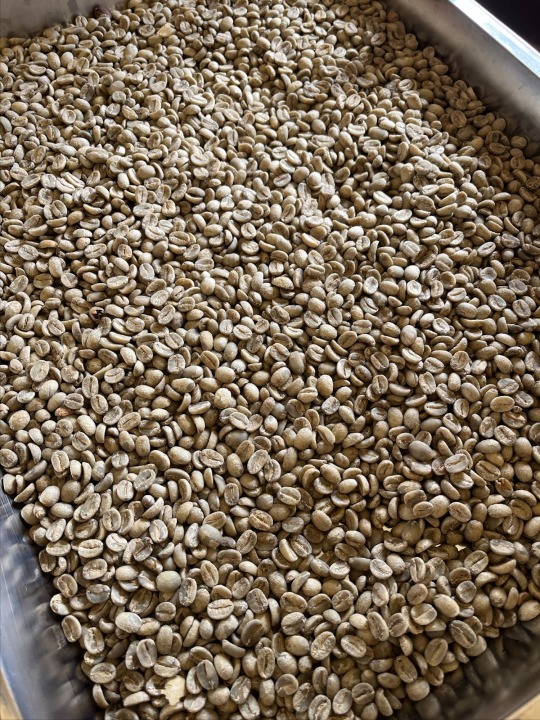
*乾燥して殻(パーチメント)を除いた豆はグリーンビーンズ(生豆)と呼ばれています。それらを焙煎してようやく馴染みのあるコーヒー豆の状態へと変わります!
My First Coffee Harvest Experience in Tadian
Hello everyone! I’m Kurumi.
A little time has passed, but today I’d like to share my experience helping with the coffee harvest on January 11 in Pandayan village, Tadian, about five hours from Baguio.
I’ve been gradually learning about coffee through CGN staff and my own research, but when I joined this harvest, I had almost zero knowledge about coffee, and everything was a surprise to me.
The experience started with my first real look at a coffee tree and its cherries. The task was to carefully pick only the ripe cherries while distinguishing them from overripe and unripe ones. To ensure new buds could grow the following year, we had to leave part of the stem intact—a delicate and precise process that required close attention.
The area we worked in was slightly sloped, which made it even more challenging. While I was carefully picking cherries, the people in Pandayan effortlessly harvested more than twice the amount I did. Seeing their physical endurance firsthand was truly humbling.
After the harvest, we returned to the barangay hall (village community center) and enjoyed a traditional meal called Pinikpikan, made with chicken and chayote. In the Philippines, people often eat with their hands, which can be tricky if you’re not used to it, as the rice tends to slip through your fingers. Initially, I struggled too, but thanks to my host family in Manila who taught me the technique, I was able to eat skillfully in Pandayan. Everyone complimented me, which made me really happy!
After a short break, we started sorting the harvested coffee cherries. Despite our careful picking, some unripe green cherries and insect-damaged ones were mixed in, so we had to remove them manually. The farmers also used a method called "floating," where the cherries are placed in water, and the hollow, lower-quality ones that float to the top are discarded.
Next, we moved on to extracting the beans from the cherries, which was also done entirely by hand. As shown in the photo below, we peeled off the outer skin one by one. It was an incredibly time-consuming task. My participation ended at this stage, but the process continues with drying and roasting. Before this experience, I never really thought about the effort behind every cup of coffee. Seeing how much time and labor go into each step, especially when done manually, gave me a whole new appreciation for it. From now on, I’ll cherish every cup I drink.
2 notes
·
View notes